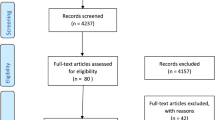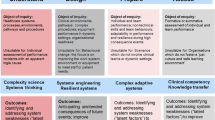Abstract
Stakeholder engagement plays a fundamental role in the success of ‘operational research’ initiatives including simulation projects. However, there is little empirical evidence of real engagement in the context of healthcare simulation. This paper principally examines this issue and aims to provide insights into the possible causes. The paper reports on the results of a literature review and 10 field studies within the UK healthcare settings, supplemented with the authors’ experience in order to arrive at an initial list of the causes, which will then be tested through a survey of expert opinions. Twelve primary and 26 secondary causal factors, which received statistically significant level of agreement from the experts, are presented in a fish-bone diagram. The findings indicate that communication gap between simulation and stakeholder groups is the top primary factor contributing the most to the poor stakeholder engagement in healthcare simulation projects, followed by ‘poor management support’, ‘clinician’s high workload’ and ‘failure in producing tangible and quick results’.


Similar content being viewed by others
References
Brailsford S (2005). Overcoming the barriers to implementation of operations research simulation models in healthcare. Clinical and Investigative Medicine 28 (6): 312–315.
Brailsford SC, Bolt T, Connell C, Klein JH and Patel B (2009a). Stakeholder engagement in health care simulation. In: Rossetti MD, Hill RR, Johansson B, Dunkin A and Ingalls RG (eds). Proceedings of the 2009 Winter Simulation Conference, IEEE; Austin, TX, pp 1840–1849.
Brailsford SC, Harper PR, Pitt M and Patel B (2009b). An analysis of the academic literature on simulation and modelling in healthcare. Journal of Simulation 3 (3): 130–140.
Coughlan J, Eatock J and Patel N (2011). Simulating the use of re-prioritisation as a wait-reduction strategy in an emergency department. Emergency Medicine Journal 28 (12): 1013–1018.
Den Hengst M and De Vreede G (2004). Collaborative business engineering: A decade of lessons from the field. Journal of Management Information Systems 20 (4): 85–113.
Eldabi T (2009). Implementation issues of modeling healthcare problems: Misconceptions and lessons. In: Rossetti MD, Hill RR, Johansson B, Dunkin A and Ingalls RG (eds). Proceedings of the 2009 Winter Simulation Conference, IEEE; Austin, TX, pp 1831-1839.
Eldabi T, Lacey P, Naseer A and Jahangirian M (2011). Integrated care development using systems modelling—A case study of intermediate care. In: Jain S, Creasey RR, Himmelspach J, White KP and Fu M (eds). Proceedings of the 2011 Winter Simulation Conference, IEEE; Phoenix, AZ, pp 3037-3047.
Eskinasi M and Fokkema E (2006). Lessons learned from unsuccessful modelling interventions. Systems Research and Behavioral Science 23 (4): 483–492.
Fildes R and Ranyard JC (1997). Success and survival of operational research groups—A review. Journal of the Operational Research Society 48 (4): 336–360.
Fone D et al (2003). Systematic review of the use and value of computer simulation modelling in population health and health care delivery. Journal of Public Health Medicine 25 (4): 325–335.
Greenhalgh T and Peacock R (2005). Effectiveness and efficiency of search methods in systematic reviews of complex evidence: Audit of primary sources. British Medical Journal 331 (7524): 1064–1065.
Greenhalgh T, Potts HWW, Wong G, Bark P and Swinglehurst D (2009). Tensions and paradoxes in electronic patient record research: A systematic literature review using the meta-narrative method. Milbank Quarterly 87 (4): 729–788.
Harper PR and Pitt MA (2004). On the challenges of healthcare modelling and a proposed project life cycle for successful implementation. Journal of the Operational Research Society 55 (6): 657–661.
Hollocks BW (2001). Discrete-event simulation: An inquiry into user practice. Simulation Practice and Theory 8 (6–7): 451–471.
Ishikawa K (1982). Guide to Quality Control. Asian Productivity Organization: Tokyo, Japan.
Jahangirian M and Taylor PM (2009). RIGHT Consolidated Exemplar Report. Brunel University: UK.
Jahangirian M, Eldabi T, Naseer A, Stergioulas LK and Young T (2010a). Simulation in manufacturing and business: A review. European Journal of Operational Research 203 (1): 1–13.
Jahangirian M, Taylor SJE and Young T (2010b). Economics of modeling and simulation: Reflections and implications for healthcare. In: Johansson B, Jain S, Montoya-Torres J, Hugan J and Yucesan E (eds). Proceedings of the 2010 Winter Simulation Conference, IEEE; Baltimore, MD, pp 2283–2292.
Jahangirian M et al (2011). A rapid review method for extremely large corpora of literature: Applications to the domains of modelling, simulation, and management. International Journal of Information Management 31 (3): 234–243.
Jahangirian M et al (2012). Simulation in health-care: Lessons from other sectors. Operational Research, An International Journal 12 (1): 45–55.
Jenkins R, Deshpande Y and Davison G (1998). Verification and validation and complex environments: A study in service sector. In: Medeiros DJ, Watson EF, Carson JS and Manivannan MS (eds). Proceedings of the 1998 Winter Simulation Conference, IEEE; Washington, DC, pp 1433–1440.
Joumard I, André C, Nicq C and Chatal O (2008). Health status determinants: Lifestyle, environment, health care resources and efficiency. OECD Economics Department Working Papers, No. 627. OECD Publishing, doi: 10.1787/240858500130.
Levasseur RE (2007). People skills: Marketing OR/MS—A people problem. Interfaces 37 (4): 383–384.
Levasseur RE (2010). People skills: Ensuring project success—A change management perspective. Interfaces 40 (2): 159–162.
Lowery JC, Hakes B, Keller L, Lilegdon WR, Mabrouk K and McGuire F (1994). Barriers to implementing simulation in health care. In: Tew JD, Manivannan S, Sadowski DA and Seila AF (eds). Proceedings of the 1994 Winter Simulation Conference, IEEE; Lake Buena Vista, FL, pp 868–875.
McClean S, Barton M, Garg L and Fullerton K (2011). A modeling framework that combines Markov models and discrete-event simulation for stroke patient care. ACM Transactions on Modeling and Computer Simulation (TOMACS) 21 (4): 25.
Melão N and Pidd M (2003). Use of business process simulation: A survey of practitioners. Journal of the Operational Research Society 54 (1): 2–10.
Murphy SP and Perera T (2002). Successes and failures in UK/US development of simulation. Simulation Practice and Theory 9 (6–8): 333–348.
Pannirselvam GP, Ferguson LA, Ash RC and Siferd SP (1999). Operations management research: An update for the 1990s. Journal of Operations Management 18 (1): 95–112.
Plsek PE and Greenhalgh T (2001). The challenge of complexity in health care. British Medical Journal 323 (7313): 625–628.
Roberts SD, Maxwell DR and Gross TL (1980). Cost-effective care of end-stage renal disease: A billion dollar question. Annals of Internal Medicine 92 (2-I): 243–248.
Robinson S (1994). Successful Simulation: A Practical Approach to Simulation Projects. McGraw-Hill: Maidenhead, England.
Robinson S and Pidd M (1998). Provider and customer expectations of successful simulation projects. Journal of the Operational Research Society 49 (3): 200–209.
Shokri-Ghasabeh M and Kavoousi-Chabok K (2009). Generic project success and project management success criteria and factors: Literature review and survey. WSEAS Transactions on Business and Economics 6 (8): 456–468.
Sud VP et al (2009). Reducing flight delays through better traffic management. Interfaces 39 (1): 35–45.
Taylor SJE, Eldabi T, Riley G, Paul RJ and Pidd M (2009). Simulation modelling is 50! Do we need a reality check? Journal of the Operational Research Society 60 (suppl. 1): S69–S82.
Acknowledgements
This work was supported in part by the EPSRC, UK (Grant No: EP/E019900/1; and Grant no: GR/S29874/01).
Author information
Authors and Affiliations
Rights and permissions
About this article
Cite this article
Jahangirian, M., Taylor, S., Eatock, J. et al. Causal study of low stakeholder engagement in healthcare simulation projects. J Oper Res Soc 66, 369–379 (2015). https://doi.org/10.1057/jors.2014.1
Received:
Accepted:
Published:
Issue Date:
DOI: https://doi.org/10.1057/jors.2014.1




